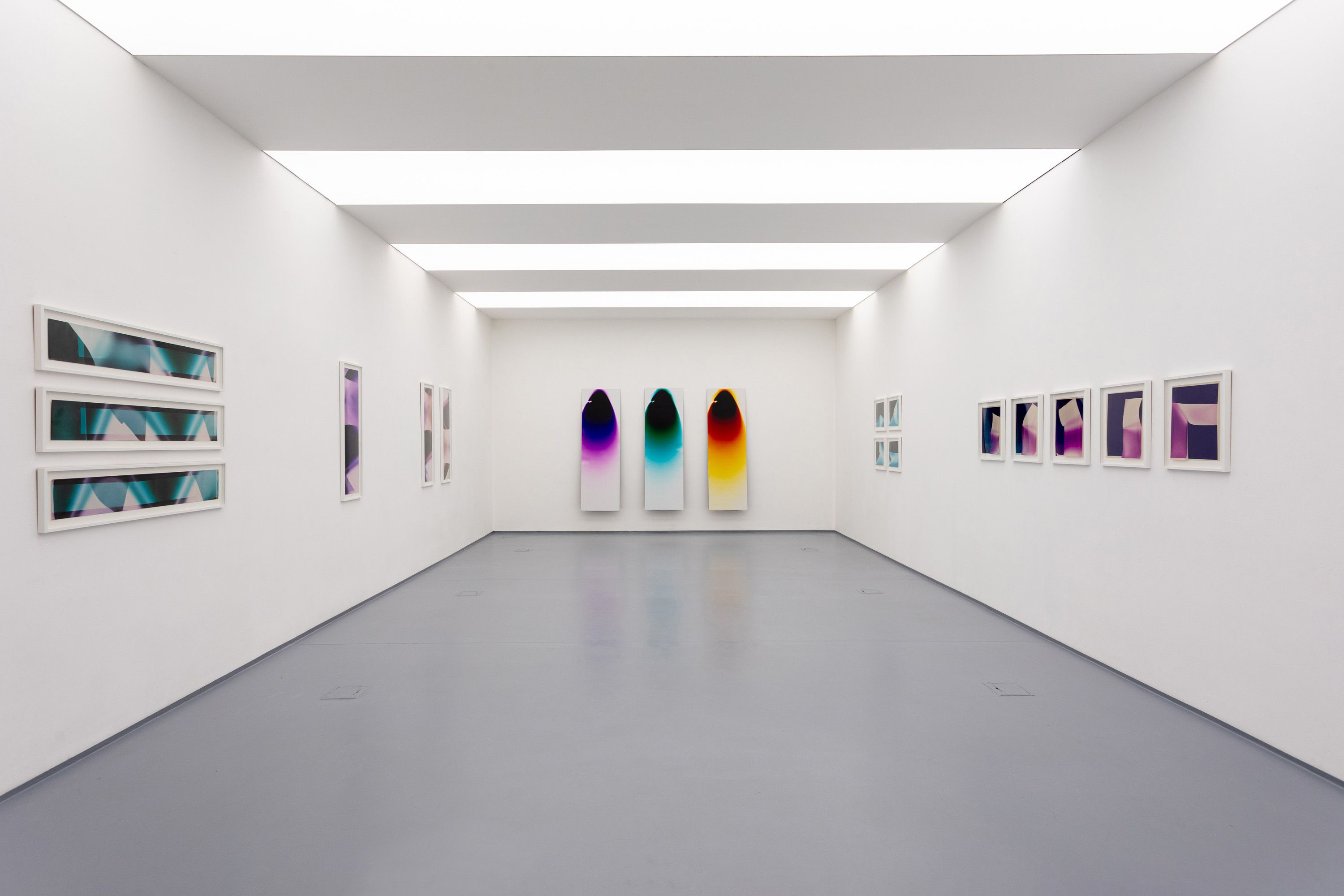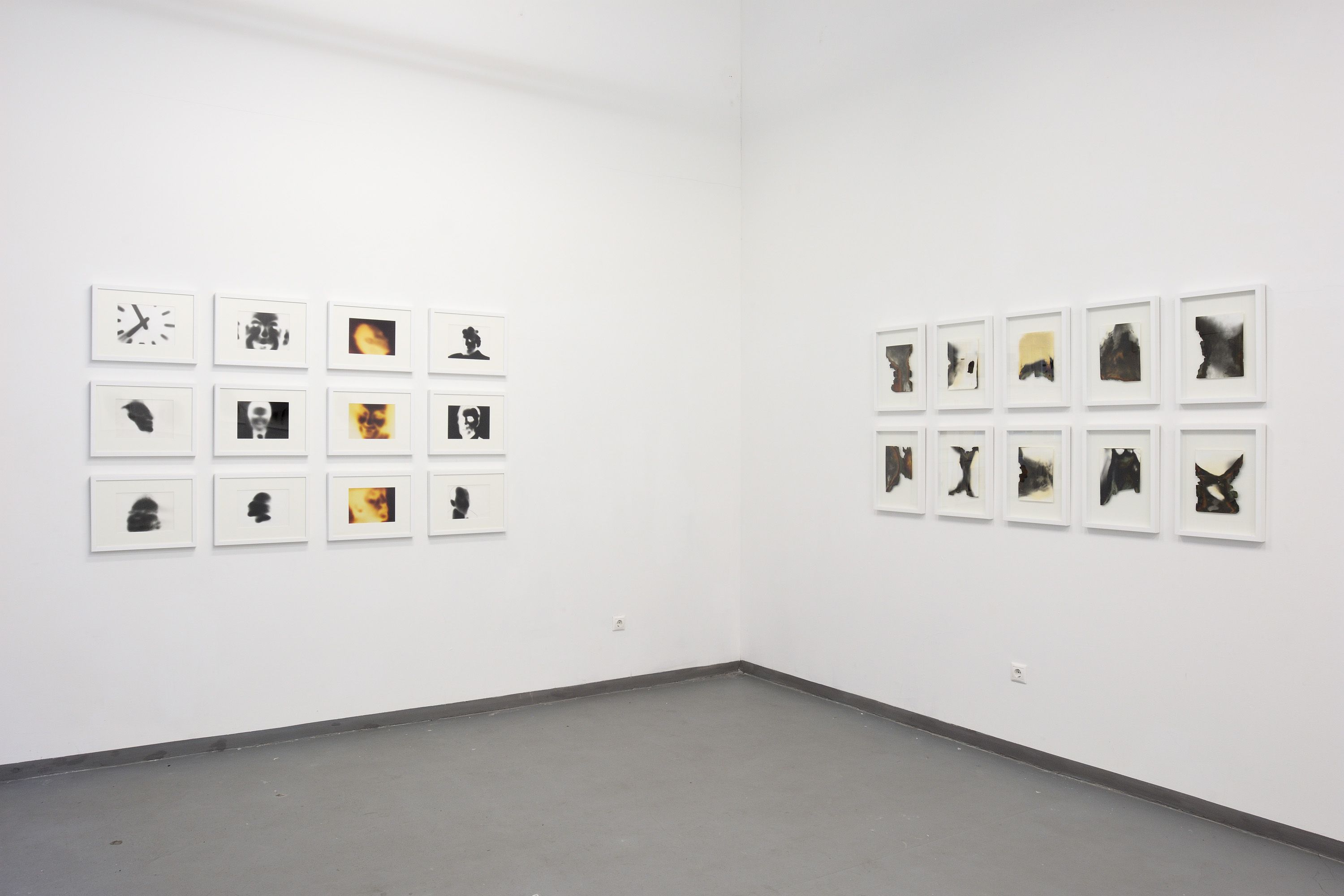TAVATE: levitation (Ágnes Eperjesi – Tibor Várnagy)
| Venue: | acb Attachment |
| Date: | May 10 – Jun 14, 2024 |
| Opening: | May 09, 2024, 18:00–21:00 |
Description
Ágnes Eperjesi and Tibor Várnagy collaborated between 1991 and 1994, forming a joint artistic identity known as TAVATE, a blend of the first letters of their names (Tibor-Ágnes Várnagy and Ágnes-Tibor Eperjesi). This period coincided with significant political, cultural, and social transformations following the change of regime, prompting the duo to explore the nuances of analog photographic techniques. They produced collaborative works, artist's books (Omens 1991, A Book 1992), and exhibitions (Woven Images of TAVATE 1992, Seed of an Exhibition 1993). The name TAVATE represents a symbiotic state where the "self" merges within an emotional and intellectual connection, combining creative identities into a singular entity. The intertwined surfaces of the photographic strips symbolically represent this union.
For the exhibition TAVATE: levitation, a selection of previously unseen or rarely seen works from three of the duo's series—Bath Images of TAVATE, Tub Images of TAVATE, and Woven Images of TAVATE—are displayed. The duo first showcased their collaborative artworks at Liget Gallery in 1991 during a collective strike by independent galleries, installing their works in a secured space behind barricaded windows. This private showing was accessible only to visitors personally invited from their circle of friends. Documents from this intimate yet performative exhibition mode are also featured in their current exhibition.
Before digital photography, during a time when analog photo materials were broadly accessible, Eperjesi and Várnagy engaged with analog photography, pushing its boundaries with a performative, experimental approach. The exhibition includes enlarged photographs from solarised black and white negatives that preserve various surface textures and colors due to negative manipulation, the physical effects of enlargement (e.g., brushstrokes), and photochemical coloring. Often, they intentionally modified traditional photographic enlargement techniques, such as the timing of fixing photographic paper, to obtain different color tones (brown, purple, yellow) from the black and white raw materials. In the Bath Images of TAVATE series, these interventions created painterly qualities on the photographic paper.
The artists deliberately employed techniques of error and surprise, such as the solarisation of negatives—intentionally exposing them to light multiple times during development to produce the effects of positive and negative images simultaneously—or using the development liquid in unusual ways which resulted in mottled, bubbly surfaces. Along the traces of such technical experiments, the images capture the most intimate union in the form of performative gestures and abstraction. After 1994 digital technology became more prevalent in the region, coupled with the increasing scarcity of analog photography materials, marked an end to an era. Today, 33 years later, TAVATE's works serve as mementos of a bygone chapter of the history of photography. The exhibited works are time capsules of love, crafted during a period when creative freedom in personal life converged with boundless possibilities following the transition. This fleeting, intangible experience of existence is immortalized on photographic paper.


